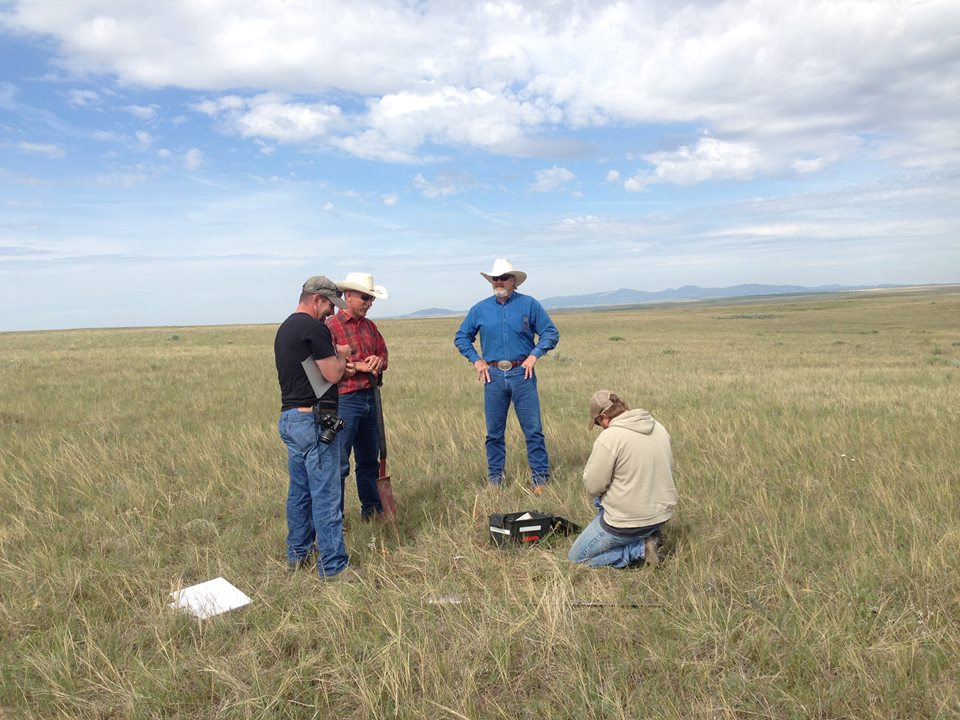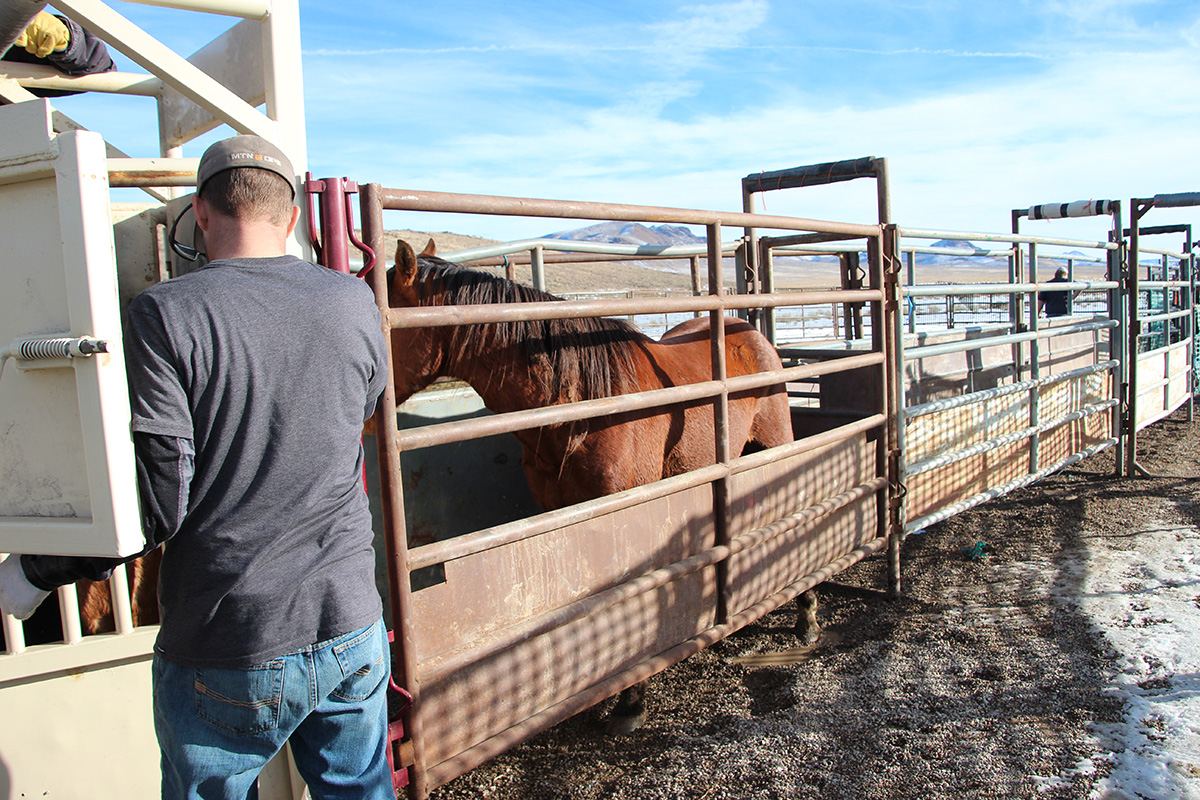Maintaining Range and Herd Health
How wild horses and burros are managed differs from how most other species are managed on public lands. Wildlife species, such as deer, are usually controlled through a combination of hunting and natural predators. Livestock use on public lands is intricately managed and controlled through grazing permits. Because wild horses and burros are protected from hunting, and because of a lack of natural predators, if left unmanaged herds can double in size in just four to five years and quickly outgrow the ability of the land to support them. Maintaining herd size at the appropriate management level is the best way to ensure healthy horses and burros on healthy rangelands.
Why does the BLM manage wild horses and burros?
The BLM manages wild horses and burros as required by the 1971 Wild Free-Roaming Horses and Burros Act. Without natural predators that can control population growth, wild horse and burro herds increase rapidly on public lands and can quickly overwhelm the food and water available to them, and cause damage to the land that can take centuries to recover. These impacts occur in areas regardless of whether wild horses and burros share the range with permitted livestock or other wildlife. Management is necessary to ensure healthy horses and burros can thrive on healthy public rangelands for generations to come.
Learn more about how BLM manages wild horses and burros below.
Appropriate Management Level

To protect the health of the land and to support healthy horses and burros, the BLM works to achieve in each HMA what is known as the Appropriate Management Level (AML) – the point at which wild horse and burro populations are consistent with the land’s capacity to support them and other mandated uses of those lands, including protecting ecological processes and habitat for wildlife and livestock.
The AML for each HMA ranges from a minimum population level to a maximum population level in order to allow for population growth over a four- to five-year period. The BLM establishes an AML through the evaluation and analysis of rangeland resource and population data spanning several years, including data relating to vegetation and soil types, weather and water quality. The AML for each HMA is set in an open, public process through field office planning efforts.
Fertility Control
As part of its efforts to manage the population growth of wild horses on public rangelands, the BLM has supported the development and testing of effective contraceptive agents for wild horses and burros since 1978. To reduce overall herd growth rates, empirical studies and modeling confirm that a focus on reducing mare and jenny fertility is more effective than efforts to reduce stud or jack fertility. Over the years, research supported by BLM and other agencies has shown that some approaches – such as hormone implants or chemical vasectomies – are ineffective or impractical.
The BLM has primarily used fertility control vaccines to reduce mare fertility. Porcine zona pellucida (PZP) vaccines and vaccines against gonadotropin-releasing hormone (GnRH), such as GonaCon, have been under development and testing since the 1990s. There are three vaccine formulations that BLM uses now:
- Native PZP vaccine, or “Zonastat-H,” can be given by hand-injection or via ground-darting. It is only effective for approximately one year, unless four or more shots are given over time.
- ”PZP-22” is a PZP vaccine that includes longer-lasting pellets of PZP. One dose is marginally effective for 1-2 years, but there can be 3-year effects if a booster shot is given. BLM only hand-injects PZP-22 into a captured wild horse.
- “GonaCon-Equine” is a vaccine that reduces levels of GnRH, stopping mares’ estrus cycles. It can be given by hand-injection or via ground-darting. One dose is marginally effective for 1-2 years, but there can be 4 or more years of effects if a booster shot is given.
However, none of these three vaccines provides the kind of long-lasting effect from one dose that would be most useful for herd management. Though PZP continues to be an important tool for land managers, severe limitations in its effectiveness prevent broader use. If a mare is treated annually, which would only be feasible via darting, it would be effective more than 90 percent of the time. However, very few wild horse herds can be managed through ground-darting programs, so annual ZonaStat-H treatments are not practical in most herds. Most wild horses are too wary of darters or it is not practical to remotely identify for annual treatment because they have few markings or other unique identifiers. Furthermore, even in herds where ground-darting programs are in place and the population growth is reduced, the BLM must still conduct periodic gathers to compensate for herd growth. The efficacy for a single application of PZP-22 remains low – averaging just a 30-75 percent reduction in foaling rate of treated mares. That means, at a minimum, one out of every four mares treated with PZP-22 could still have a foal within the first year. Recent research funded by BLM and the National Park Service has shown that two doses of GonaCon-Equine can lead to 4 or more years of contraception. BLM intends to increase its use of Gonacon, using hand-injections or darting, depending on the local conditions.
Intrauterine devices (IUDs) are an extremely safe form of contraception in humans, and recent studies demonstrate that soft, flexible IUDs placed by veterinarians can be safe and effective for horses, too, leading to several years of reversible, contraceptive effects. Only non-pregnant mares can receive IUDs. BLM plans to increase its use of IUDs where that is appropriate.
As part of a sustained fertility control program, the BLM would support the use of humane methods of sterilizing some wild horses and burros. Humane sterilization could be a cost-effective way to slowing population growth and reducing the need for gathers and animal handling in the long run. Sterilizing some wild horses in herds where it’s not practical to use short-term fertility control vaccines and IUDs is supported by the American Association of Equine Practitioners and American Veterinary Medical Association – two of the largest equine veterinarian associations in the world.
In addition to relying on science for its day-to-day management of wild horses and burros, the BLM continues to invest in a diverse portfolio of research projects to develop and test more effective fertility-control tools, along with other modern technologies and methods for wild horse and burro management. BLM’s research is in partnership with the U.S. Geological Survey and several universities. Learn more about our science and research initiatives.
Gathers

The BLM manages the population growth of a majority of wild horse and burro herds by periodically gathering and removing excess animals before the range is overgrazed and damaged. Gathers are conducted through the use of helicopters and where feasible and appropriate, bait-traps. The BLM makes every effort to conduct gathers in a safe and humane manner. In fact, a recent study highlighted by The Horse: Your Guide to Equine Health Care reports that gathering wild horses using helicopters is as safe as bait-trapping. This further confirms the practice that the BLM has used for over four decades to safely and humanely gather wild horses. Removed animals then enter the Adoption and Sales Program, where every attempt is made to place them into good, private homes. Absent a willing owner, the BLM cares for wild horses for the rest of their lives on off-range pastures rented from land owners in the Great Plains and Midwest.
